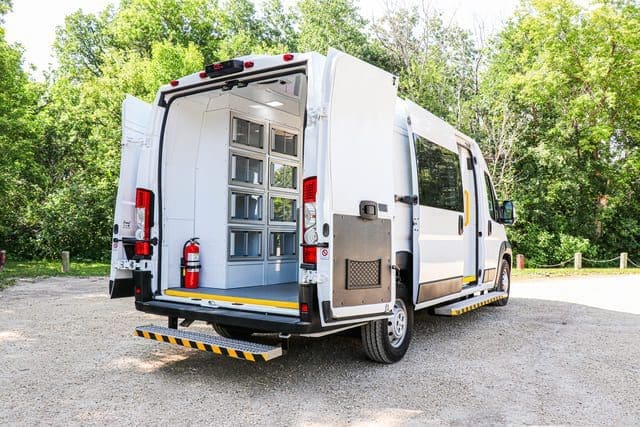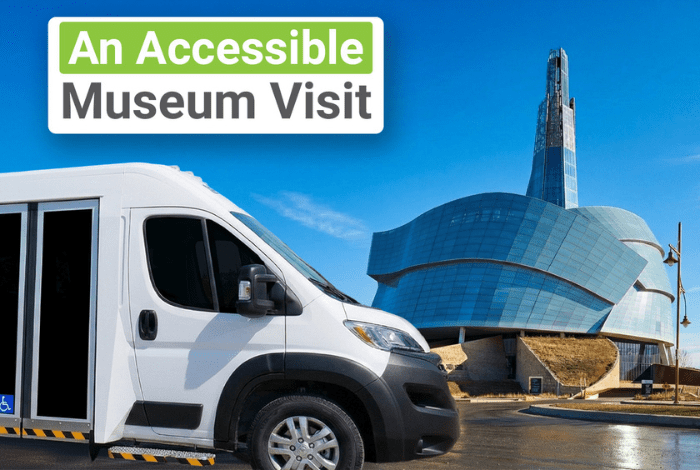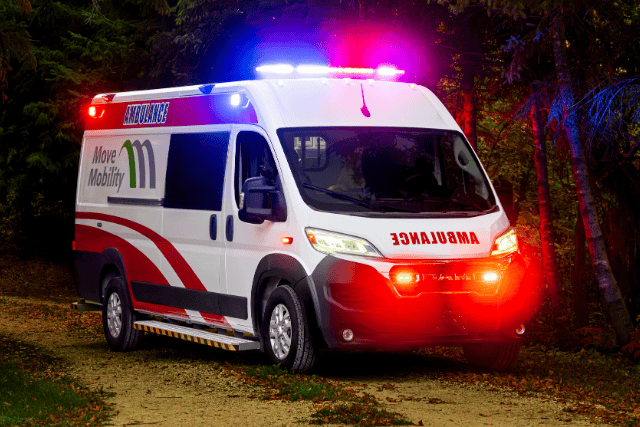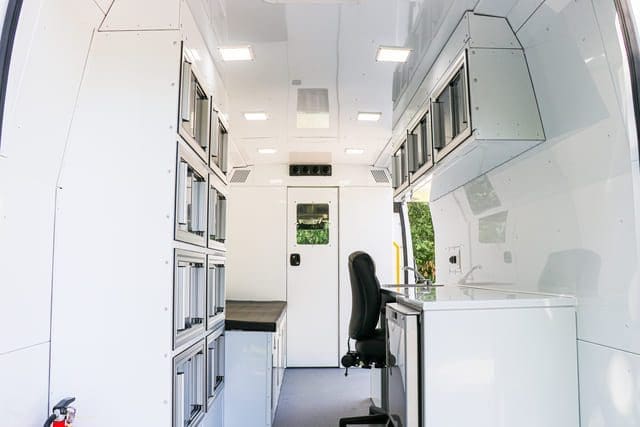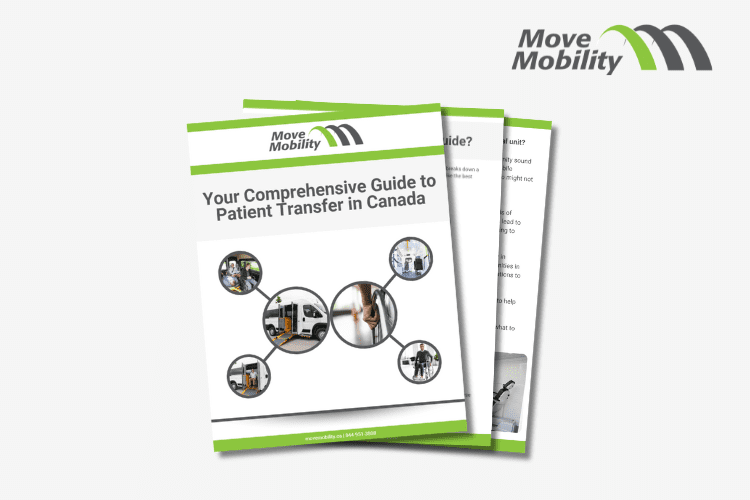Did you know that mobile primary care clinics are becoming more popular in Canada? If your organization is considering one, you likely know why: there are too many people in remote or underserved communities who can’t reach healthcare when they need it. But getting a mobile primary care clinic off the ground can feel overwhelming, especially when it comes to cost.
Without clear answers, it’s hard to know where to start or what to expect. The risk of doing nothing is high; every month without a mobile primary clinic means more people go without necessary healthcare services. That gap can lead to:
- Untreated health issues
- Rising emergency visits
- More strain on local health services
At MoveMobility, we’ve been working for over 20 years to make healthcare accessible, meeting organizations like yours at every step of the way. We build mobile clinics that reduce healthcare barriers and save lives. While we know other manufacturers are out there, we’re dedicated to giving you clear, straightforward information. We want you to feel confident, informed, and ready to bring healthcare where it’s needed most.
In this article, we’ll break down the cost of mobile primary care clinics. It doesn’t matter if you’re early in your research or ready to take the leap, this guide is here to help. Keep in mind that the costs in this article reflect MoveMobility’s Mobile Clinic Van, are just estimates, and subject to change.
Mobile primary care clinics: how much do they cost?
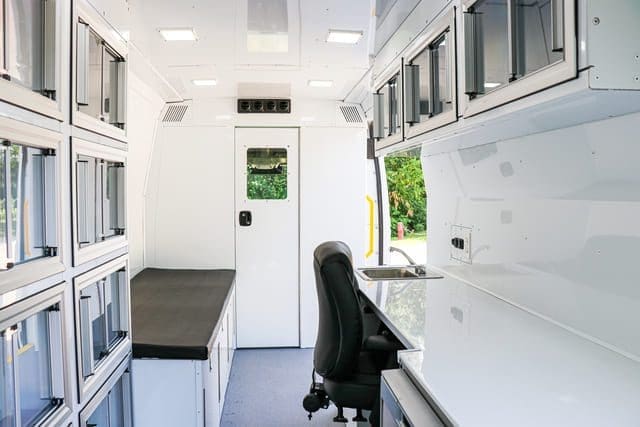
Mobile primary care clinics cost between $205,000 to $315,000. You’re probably wondering why there is such a big price range. Every organization has unique needs for its mobile primary care clinic, which impacts the cost.
Some organizations use mobile primary care clinics to administer vaccines, while others use them to provide pediatric care or even mental health support. Each type of service requires different layouts, equipment, and space.
That’s why costs can vary so much. For example, a clinic focused on basic check-ups may look very different—and cost much less—than one equipped for more specialized healthcare or advanced screenings. Understanding these factors can help you budget realistically for a clinic that serves your target community’s specific needs.
In the next section, you’ll learn about specific customizations that impact the cost of your mobile primary care clinic.
What customizations impact the cost of mobile primary care clinics?
Looking to keep patients more comfortable in hot weather? Need more natural light or extra diagnostic equipment? Each customization can make a big difference in how your mobile primary care clinic serves the community. Let’s break down what you can expect to pay for each option.
Awning: $5,000
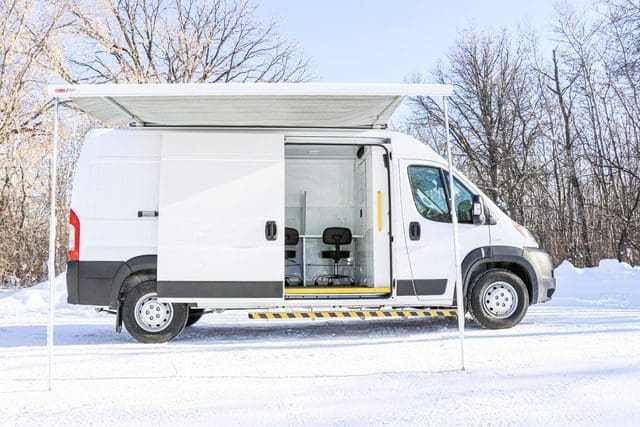
An awning adds shade and creates a welcoming space outside your mobile clinic. This is especially helpful if your clinic parks in busy areas or open spots with no shade. In many rural parts of Canada, mobile clinics are often set up in open parking lots or fields, where there’s little cover. An awning keeps patients cooler and more comfortable while they wait.
For example: A mother brings her toddler to the clinic on a hot summer day. Thanks to the awning, they can wait comfortably in the shade instead of standing in the sun. It makes a stressful visit feel a little more manageable.
Individual seating options: $2,000
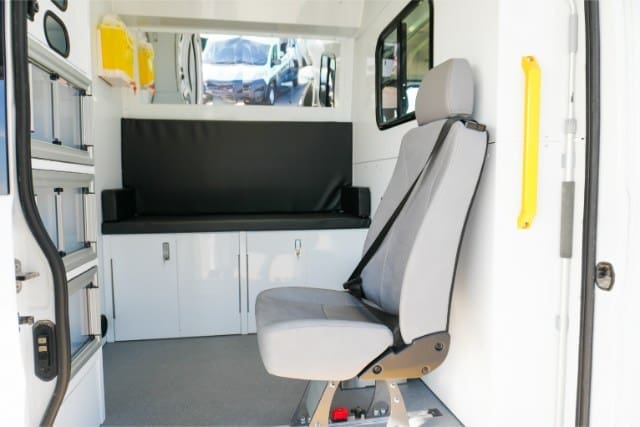
Adding individual seating options is a great way to make your mobile primary care clinic more comfortable. Instead of having just one long bench, you can have separate chairs or seats. This gives patients more personal space and helps them feel more at ease during their visit.
For example: A senior citizen visits for a check-up. With individual seating, they can sit comfortably without feeling cramped. This small change can make a big difference in how they feel during their appointment.
Extra window: $2,700
Adding an extra window can really brighten up your mobile primary care clinic. More windows mean more natural light, which can create a more welcoming environment. This is especially important in colder months when patients often feel cooped up.
For example: During a busy flu season in Manitoba, a family visits a mobile primary care clinic in a nearby community. The extra window allows sunlight to stream in, making the space feel warm and inviting. It can help ease the anxiety of a child visiting for a vaccination, turning the experience into a more positive one.
Additional lighting options: $2,000
Good lighting is important in your mobile primary care clinic. Adding more lights makes everything easier to see, which is super helpful during check-ups or when giving vaccines. Everyone wants to be sure they’re getting the best care.
For example: Imagine a nurse working late in a mobile primary care clinic in Alberta. With extra lights, they can see everything clearly while checking a child for flu symptoms. The bright space helps the child feel more comfortable, making the visit less intimidating.
Extra equipment: $3,400 – $101,000
Having the right equipment in your mobile primary care clinic is key to providing good care. This can include anything from small diagnostic tools to larger machines like portable X-ray machines and vaccine fridges. Each piece of equipment helps you meet the specific health needs of your community.
For example: Picture a mobile primary care clinic visiting a rural town in Ontario. With a portable X-ray machine, doctors can quickly diagnose a broken arm right on the spot. This saves time and helps kids get the care they need without traveling long distances.
Window tinting: $2,700
Tinting the windows on medicine cabinets is a smart choice for a mobile primary care clinic. It helps protect sensitive medical supplies from sunlight and keeps them safe from prying eyes. Adding locks is also important to keep everything secure.
For example: Think about a mobile primary care clinic parked at a busy community event in British Columbia. The tinted windows on the medicine cabinets keep medications out of direct sunlight, ensuring they stay effective. The locks give the healthcare team peace of mind, knowing their supplies are safe while they attend to patients outside.
What other costs can you expect with mobile primary care clinics?
When planning for a mobile primary care clinic, it’s important to think about more than just the purchase price. There are a couple of additional costs you can expect.
Administration fee: $1,400
An administration fee covers things like processing paperwork and any other necessary documentation to make sure your clinic is ready to operate without any hiccups.
Delivery fee: $5,000
A delivery fee is another cost you should consider when budgeting for your mobile primary care clinic. This fee covers the transportation of your clinic from MoveMobility to your chosen location. It ensures that your mobile primary care clinic arrives safely and is ready for use.
Deposit: $50,000
When you order your mobile primary care clinic, a deposit is required. This upfront payment shows your commitment to the purchase and secures your order with MoveMobility. It’s a key step in the process that helps get production started.
Taxes
Don’t forget about taxes when budgeting for your mobile primary care clinic. Taxes can add a significant amount to your total costs. In Ontario, the current sales tax rate is 13%.
For example, if your mobile primary care clinic costs $205,000, here’s how the tax breaks down:
- Price of the clinic: $205,000
- Sales tax (13%): $26,650
- Total cost: $231,650
Ready to learn more about mobile primary care clinics?
You started reading this article to learn about the cost of mobile primary care clinics. By now, you have a better idea of how much they cost and what features contribute to those costs.
At MoveMobility, we believe everyone should have access to good healthcare, no matter what part of Canada they live in. We want to help you find the best primary care mobile clinic for your needs.
If you have any questions about anything discussed in this article, click the button below to talk to a mobility expert. We’re here to help!


